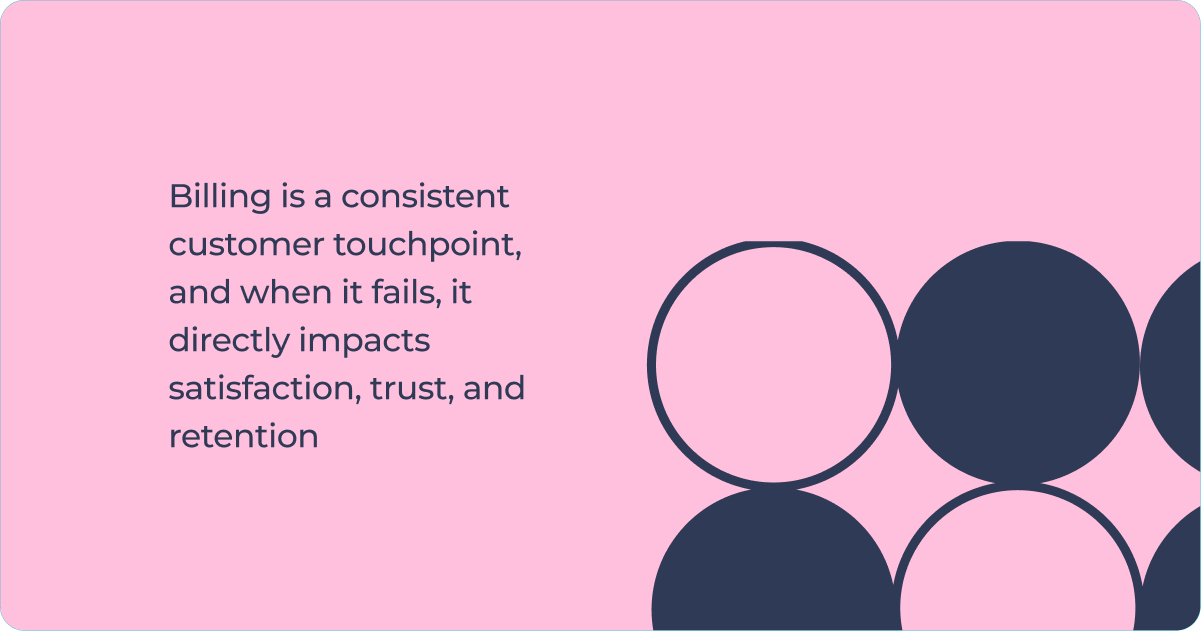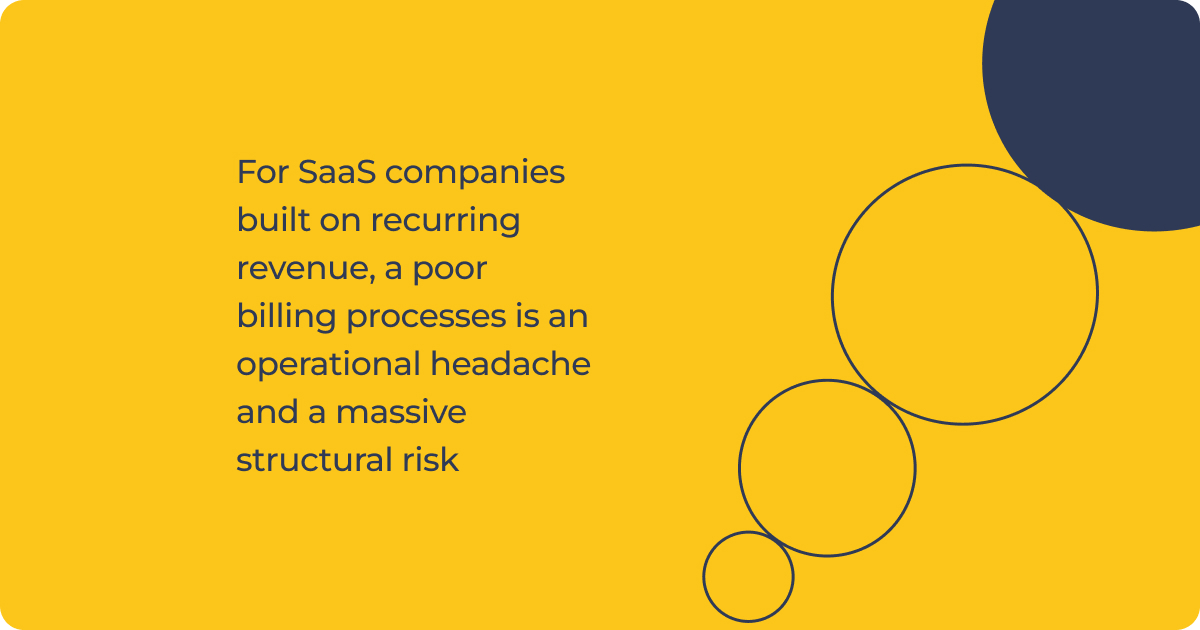ServiceNow helps MSPs scale delivery, but not revenue.
While the platform handles workflows, assets, and service management with precision, it stops short at billing—the very system that turns services into cash.
That forces IT service providers into workaround mode: stitching together spreadsheets, using custom code, or legacy billing systems that can’t keep pace with evolving pricing strategies.
Meanwhile, the ServiceNow ecosystem is branching into upstream and downstream functions. What started as an ITSM platform is becoming a broader lead-to-cash ecosystem spanning CRM, quoting, order management, and customer success. And the opportunity is only growing: IT managed services revenue is projected to grow 13% globally in 2025, reaching $595 billion.
But this opportunity comes with a catch shaped by global economic conditions. The current environment is marked by slowing revenue growth in mature IT services markets, rising operational costs—especially for skilled IT talent—and increasing pricing pressures as clients demand more value for less.
Despite digital transformation efforts and growing service complexity, margins for IT service providers have remained flat since 2015, according to a recent McKinsey analysis. That same report underlines the strategic importance of pricing, noting that a 1% price improvement delivers more bottom-line impact than an equivalent gain in volume or cost reduction.
And that brings us to the heart of the issue. While service delivery is increasingly automated, billing still lags behind. Just as growth is cleared for takeoff, outdated billing infrastructure keeps revenue grounded.
Here, we look at three companies delivering recurring or managed IT services that faced this exact challenge. Each was using ServiceNow to run key parts of their operation, but brought us in to automate billing and connect it to their revenue lifecycle.
Before we go there, though, it’s important to understand the winds at play.
Where ServiceNow needs complementary third-party support
For many, ServiceNow is the system of record for everything from asset management and service delivery to ticketing and customer interactions. Those offering complex IT services or subscription-based solutions get a smooth runway for operations: ServiceNow tracks who’s using what, and when.
But when it’s time to lift off into monetization, billing drags everything back to the tarmac.
Here’s why: while ServiceNow knows what was delivered, it doesn’t have the native capabilities to calculate charges, apply customer-specific rules, or generate compliant, itemized invoices.
Now, that might not be a problem for simple fixed-fee billing. But for those who operate with usage-based pricing, flexible contracts, or customized discounts, it becomes a real bottleneck.
That’s where platforms purpose-built for monetization like Good Sign step in:
- ServiceNow holds the contract and asset data: the “what, who, and when” of service delivery.
- Good Sign connects to ServiceNow (and other systems) to retrieve the raw data: usage logs, customer entitlements, and service order lines.
- Good Sign then applies the billing logic: discount rules, pricing models, tiered usage rates, even contract exceptions.
- Finally, it generates accurate, audit-ready invoices, sends them to your ERP or accounting system, and even provides clear usage breakdowns to your customers.
Put another way: ServiceNow knows what happened and Good Sign knows how to charge for it. And here’s how that played out in three very different real-world scenarios:
Manual work across too many people
The global IT powerhouse Fujitsu used to have up to 20 people manually handling billing across their internal teams. Contracts were complicated, and delays between service delivery and invoicing were common. Even though ServiceNow was used for managing their service ecosystem, billing was completely manual and disconnected.
With Good Sign in place:
- Customer and contract data was pulled directly from ServiceNow
- Usage data from ServiceNow CMDB (and elsewhere) was mediated and enriched
- Billing logic was applied to ensure every service was monetized correctly
Good Sign became the automated monetization layer on top of ServiceNow. It turned manual chaos into reliable, timely, and accurate invoicing.
Billing volumes growing too fast for legacy tools
Atea, one of the Nordics’ largest MSPs, was facing a different kind of pressure: rapidly increasing billing volumes and a patchwork of systems to support it. Their legacy system couldn’t keep up with customer-specific pricing or the rollout of new offerings. Internally, billing was still based on what they called “gut feeling.”
After integrating ServiceNow with Good Sign:
- ServiceNow remained the system for managing delivery and agreements
- We pulled and aligned data from those agreements and usage logs
- Pricing and billing logic was automated and standardized across teams
- Billing outputs were routed cleanly into Microsoft Business Central
This more scalable billing backbone reduced errors and brought new services to market faster.
Hundreds of customer-specific contracts
Enfo’s business model depends on high-complexity services: custom bundles, hundreds of different contracts, and frequent invoice splitting across cost centers. Even with ServiceNow in place, they were struggling with slow invoicing, low visibility, and labor-intensive data handling.
With Good Sign:
- Contract and order data flowed in from ServiceNow
- Consumption data from a wide range of services (such as apps, servers, storage, and messaging) was centralized
- Billing rules were managed in our platform, tailored to each contract’s quirks
- Final invoice data was sent downstream to the financial system
For Enfo, this integration gave them the flexibility they couldn’t find anywhere else. Their billing turned into a structured, automated process that could actually scale.
The pattern across all three cases
In traditional MSP setups, service delivery managers often become the accidental owners of billing: collecting data manually, tracking pricing exceptions, adjusting for usage fluctuations. Without automation, there’s a fair chance that something goes wrong and money is left on the table.
Even worse, the cost of mistakes compounds. Send customers the wrong invoice, and you don’t just delay revenue, but risk losing the customer entirely. One wrong bill is a glitch. Two is a red flag.
If any of this sounds familiar, you’re not alone. Across the MSP landscape, even those running modern ITSM platforms and well-structured CMDBs still find themselves stuck in manual chaos. Gut feeling billing, or slow invoicing and low visibility are all too common. And as contracts get more complex or service volumes grow, those challenges scale with you.
In each case listed previously, the solution was the same:
- ServiceNow provides structure by tracking what’s delivered, to whom, and when.
- Good Sign turns that delivery into revenue by applying complex pricing logic, automating billing, and closing the last mile of lead-to-cash.
Here’s the key takeaway whether you’re already running ServiceNow or just planning your stack: No matter how fast you deliver, revenue can’t take off if billing is stuck on taxiing.
Furthermore, if your go-to-market depends on usage-based services, complex customer contracts, or flexible pricing models, you need billing that keeps up.
Automated, accurate billing is how you scale with confidence—even in times like these.



